<> Atrophaneura astorion zaleucus (Hewitson, 1865) <>
the Burmese Batwing ผีเสื้อปีกค้างคาวพม่า
Click on any photo to see all photos full size in Lightbox
Additions and corrections to the information provided on this page is always welcome. Please use the Contact form.

Photo taken at Doi Suthep-Pui National Park, Chiang Mai, Thailand 400m a.s.l.

Atrophaneura astorion zaleucus has a limited range in the northern parts of the SE Asia region and where it does occur it can be fairly common. The sexes are similar in appearance but the female is larger and her forewings are dusted with white while the males forewings are totally black. It is however, very difficult to determine the sex in the field although in reality the female is rarely seen. The red body indicates to potential predators that the butterfly is toxic or at least distasteful. This derives from the larvae which feed exclusively on species of Aristolochia, climbing vines containing toxic aristolochic acids. These toxins are then passed on by the larva to the adult butterfly.
Both sexes visit flowers for nectar and the males regularly mud puddle. Atrophaneura astorion zaleucus is multivoltine with several broods per annum. It is not known how many eggs the adult female lays as little research seems to have been done on this species, or indeed any other member of this genus. It is known however, that the newly hatched larva eats its eggshell as its first meal.
Synonyms: Papilio zaleucus, Atrophaneura varuna zaleucus, Atrophaneura zaleucus, Papilio nigricans, Byasa zaleucus
Taxonomy: Animalia - Arthropoda - Insecta - Lepidoptera - Papilionidae - Papilioninae - Atrophaneura - astorion
Regional subspecies: Atrophaneura astorion zaleucus (all locations)
Regional Distribution: Myanmar, N.Thailand, N.Laos, Vietnam, China (S.Yunnan)
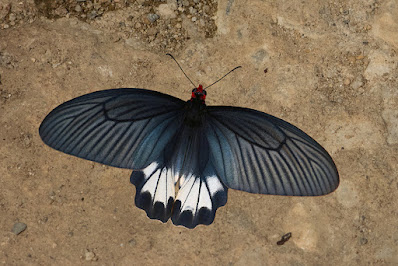 |
| Doi Suthep-Pui National Park, Chiang Mai, Thailand 520m a.s.l. |
Habitat: Atrophaneura astorion zaleucus is usually found in evergreen and deciduos montane forest at low to moderate elevations. It has been recorded in habitats up to 1800m a.s.l.
Flight time: all year depending on location Wingspan: 95-115mm
Life History: egg 6 days instar 1 2 days instar 2 3 days instar 3 2 days instar 4 4 days instar 5 5-6 days pupa 14 days Total egg to adult 34-36 days
All times are approximate and can vary depending on the season.
Larval Hosts: Aristolochia acuminata (syn. Aristolochia tagala), Aristolochia kaempferi (Aristolochiaceae). There may be other hosts almost certainly from the Aristolochiaceae family.
Actual host plant used depends upon location and availabilty of plant species.
Adult Food Sources: Nectar - Lantana camara (Verbenaceae), Ixora coccinea (Rubiaceae), Terminalia bellirica (Combretaceae), Sambucus javanica (Viburnaceae), Dianthus sp. (Caryophyllaceae). There may be other nectar sources that have not yet been recorded. Other - mud puddling
 |
| Chiang Dao Wildlife Park, Chiang Mai, Thailand |
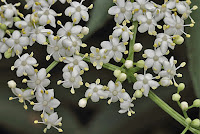 |
| Sambucus javanica, a nectar source |
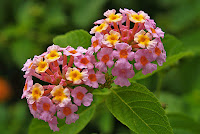 |
| Lantana camara, another nectar source |
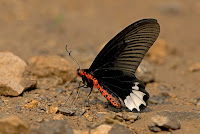 |
| Doi Suthep-Pui National Park, Chiang Mai, Thailand |
 |
| Chiang Dao Wildlife Park, Chiang Mai, Thailand |
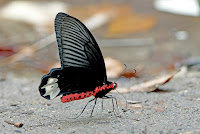 |
| Doi Suthep-Pui National Park, Chiang Mai, Thailand |
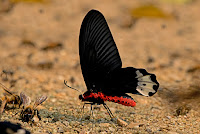 |
| Chiang Dao Wildlife Park, Chiang Mai, Thailand |
 |
| Aristolochia acuminata, a larval host |
 |
| Aristolochia kaempferi, another larval host |
Links to other pages in this series for species in the same subfamily
Graphium nomius
Papilio agenor
Papilio helenus
Troides helena
